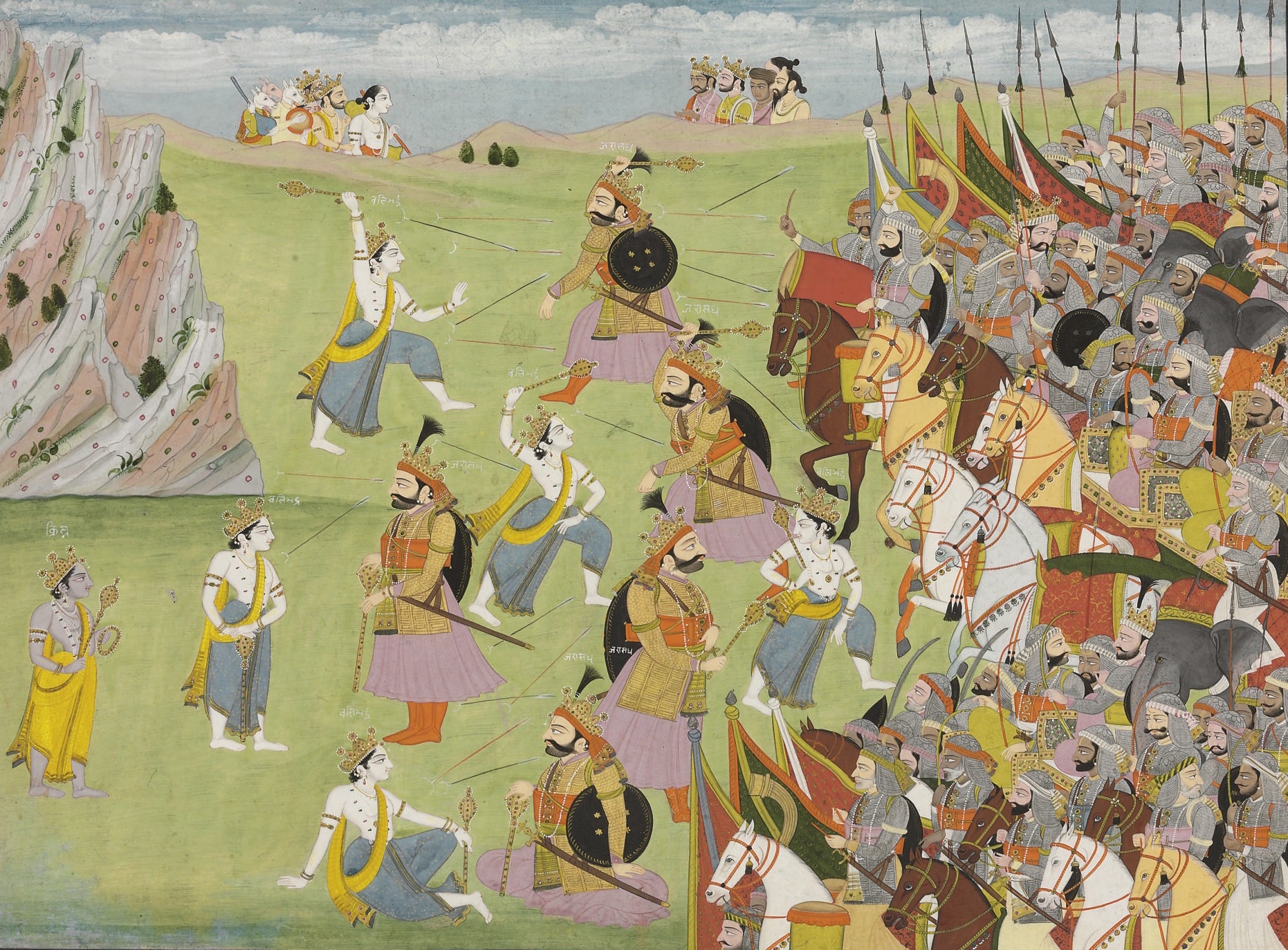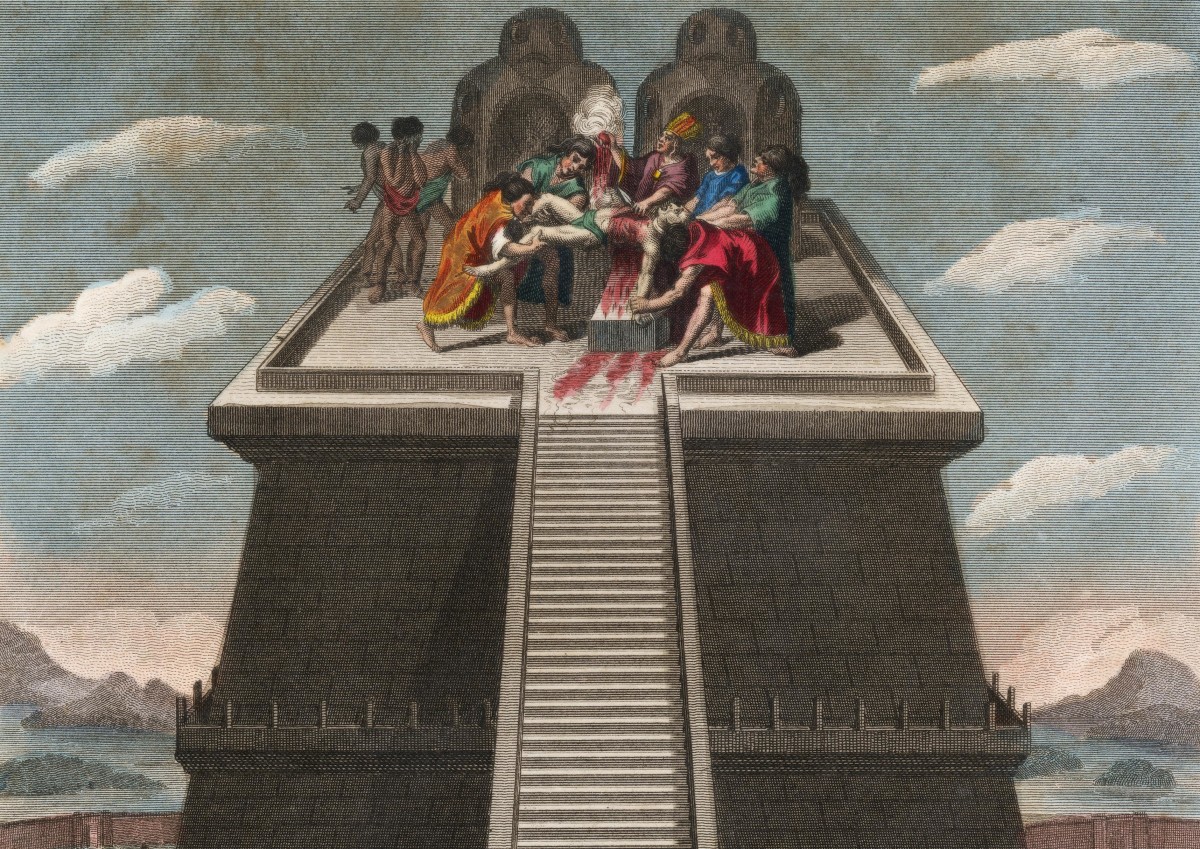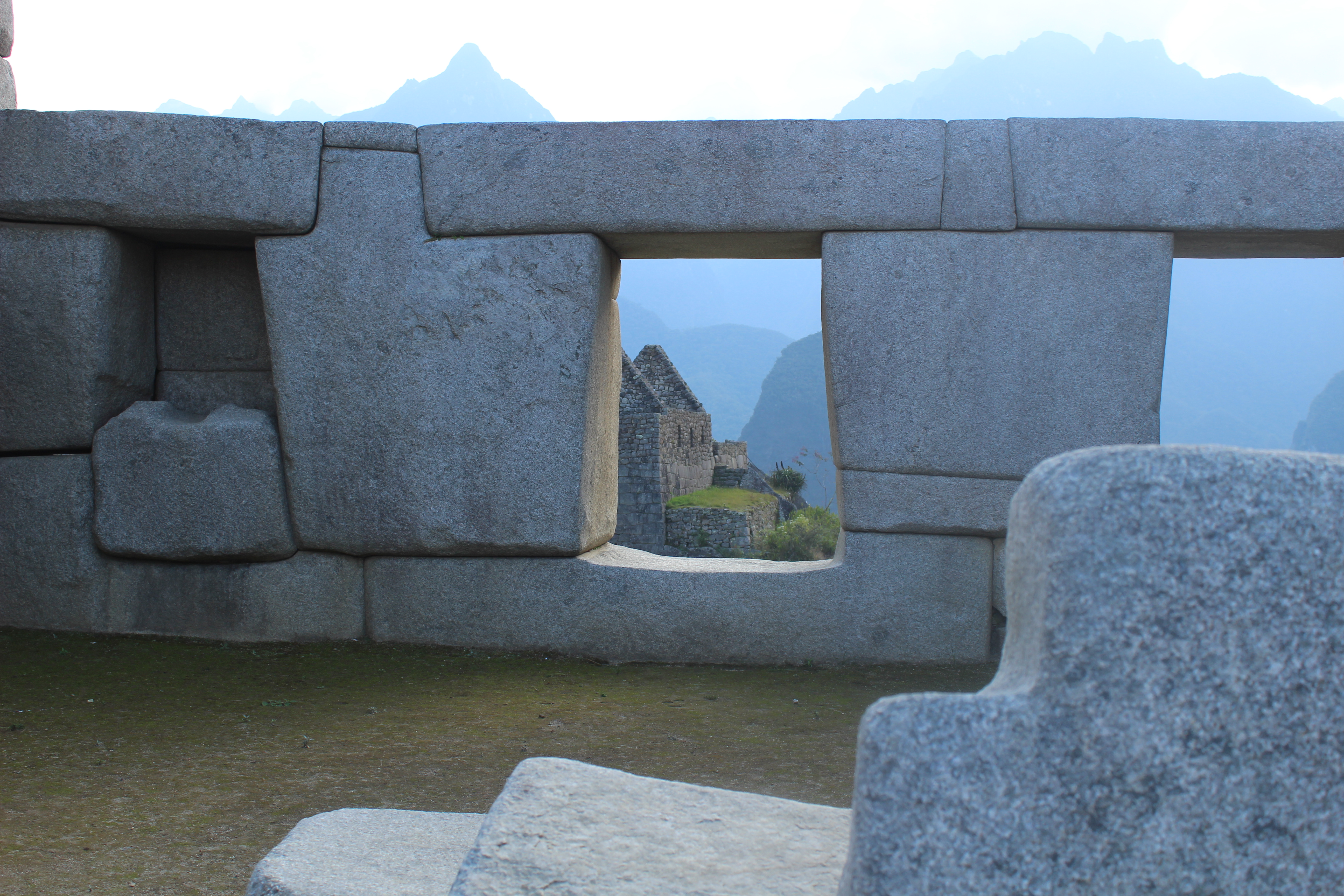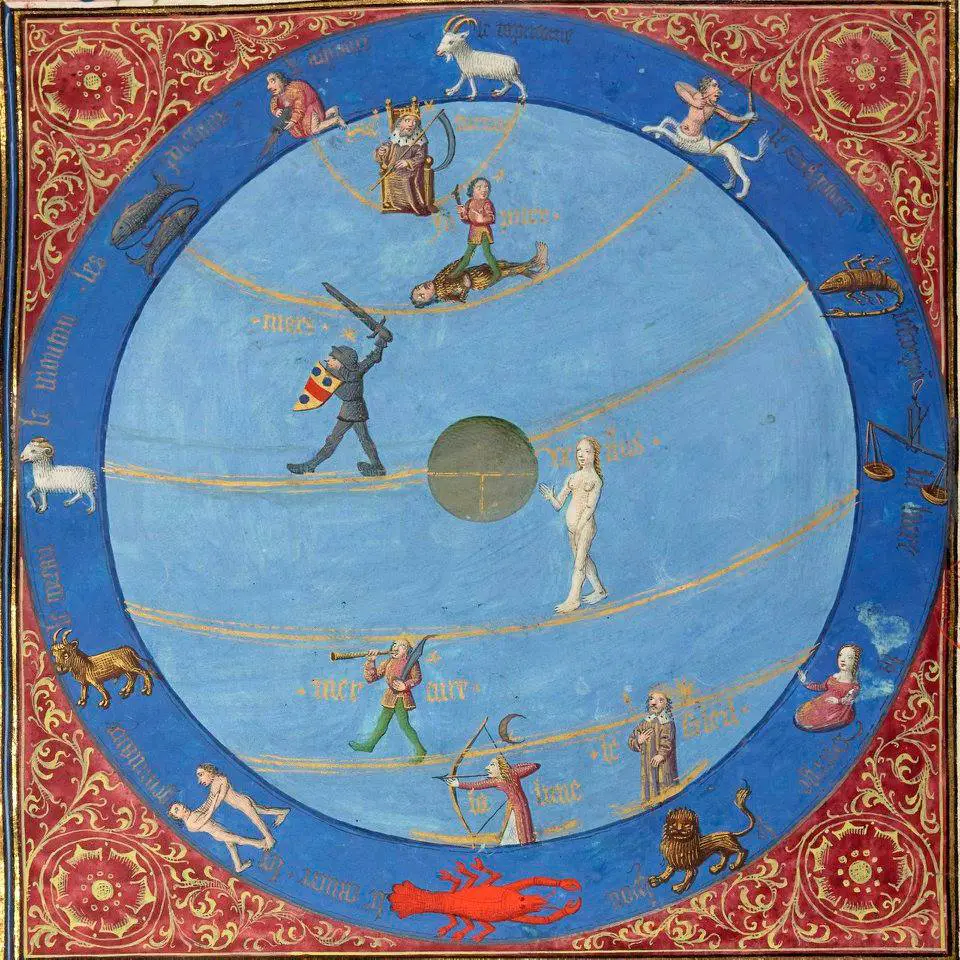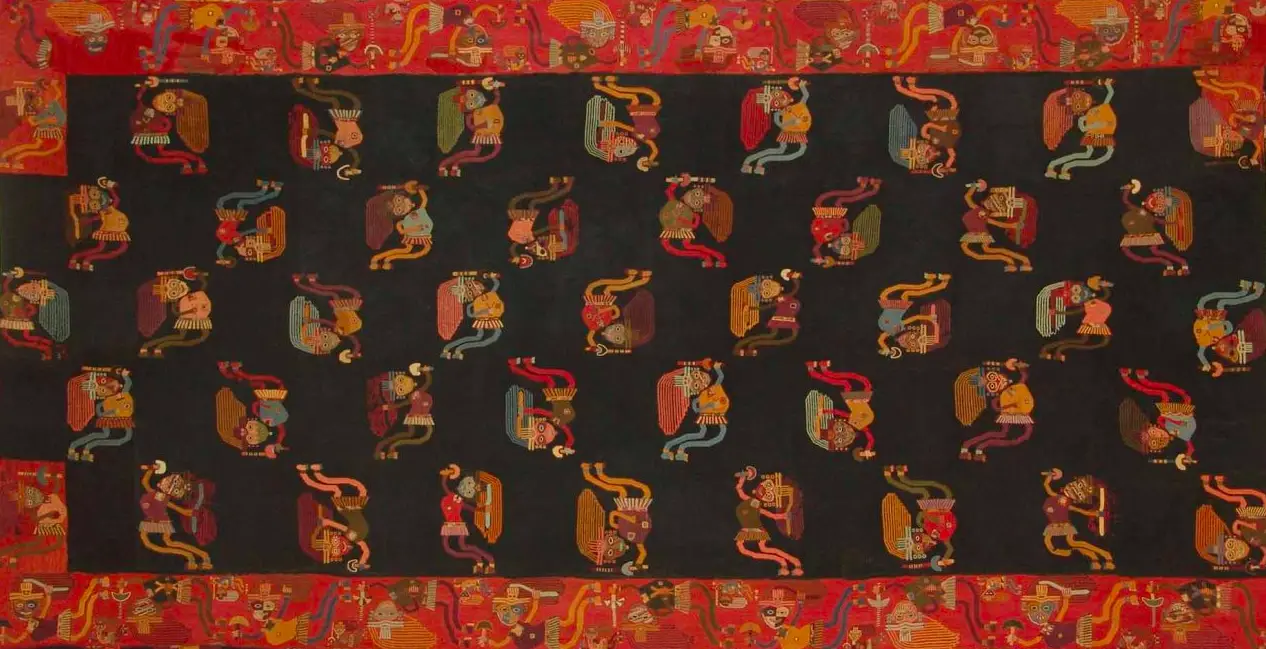Tag: Deluge
The "blood of the Sun": on human sacrifice in the pre-Columbian tradition
The ancient traditions of Central and South America held that the Sun, as well as water, earth and the gods themselves, in order to prosper and guarantee the continuation of the world, had to be regularly fed with human blood, a concept that precisely among the Aztecs became of absolute, if not strictly obsessive, importance; nevertheless, the same conception was also found among the Maya, the Toltecs, the Olmecs and the Incas, as evidenced by the historical sources that have come down to us.
On the sacred symbolism of the floor mosaic of the Cathedral of Otranto
Taking a cue from the studies of authors such as Burckhardt, Eliade, Guénon and Chevalier on the "constructive symbolism" of cathedrals, we deal here with that of Santa Maria Annunziata di Otranto in Puglia.
The mystery of the Incas: the "dark constellations" and the celestial "floods"
This article is based on the summary of William Sullivan's book "The Mystery of the Incas" edited by Piervittorio Formichetti and expanded by Marco Maculotti.
waka, totem animals, constellations
The ancient Andean peoples called huaca (o waka) "the presence of the sacred and the magical-telluric in each of its multiple forms or manifestations (stones, mountains, rivers, stars, celestial and terrestrial phenomena, crossroads, funeral cults, etc.)"That they encountered everywhere in a sacred world / mental space [González, The pre-Columbian symbols, p. 75]. In other words, they revered the innumerable states of a Universal Being manifesting through the environment as a hierophany. The Italian anthropologist Mario Polia writes [The blood of the condor, p. 86], reporting an indigenous tradition of the Samanga valley: "Le huacas, be they rocks, stones or mountains, they are hungry and if men do not nourish them, they devour their soul, their "shadow", sucking life from their bodies. If they are satisfied, however, they protect the fields, ward off evils and call the rains».
Antediluvian, giant, "gentle" humanity
We continue here the discourse on the Andean tradition, previously addressed in the four articles that we have already published on AXIS mundi [cfr. "Andini notebooks", In Ancient America]. In closing, we will also have the opportunity to make some comparisons with other traditions, including Mexican, Hellenic, Celtic and Norse).
di Marco Maculotti
cover: Machu Picchu, photo by the Author
Closely connected to the doctrine of cycles and of pachacuti [cf. Pachacuti: cycles of creation and destruction of the world in the Andean tradition] is the belief in the existence of ancient proto-human races that populated our planet before the advent of the "Fifth Sun" - races which, as we have seen [cf. Viracocha and the myths of the origins: creation of the world, anthropogenesis, foundation myths], are cyclically eliminated, at the end of each "Great Year", by a catastrophic event, to leave room for the humanity of the next cycle (similar to the Hesiodic myth).
Stellar symbolism and solar symbolism
di Andrew Casella
cover: "The zodiac and the planets" by Bartholomeus Anglicus, taken from De proprietatibus rerum, Ahun 1480
[follows from Cyclic time and its mythological meaning: the precession of the equinoxes and the tetramorph e A Science in Tatters: Survival of the Doctrines of Cyclic Time from the Timaeus to the Apocalypse]
To resume the common thread of the images that we introduced in the first two appointments of this cycle, in the light of the previous considerations, it might be useful to quote a passage from Norse mythology.
Pachacuti: cycles of creation and destruction of the world in the Andean tradition
di Marco Maculotti
cover: Paracas culture textiles (coastal Peru)
A central concept in the Andean cosmogonic tradition is the belief in regular cycles of creation and destruction that would initiate and end the various cosmic eras. Time was conceived in a circular way; according to this doctrine, it had only two dimensions: the present (Kay Pasha) which at its end leads to the "ancient time"(Nawpa Pacha), from which we will return again to the present time [Carmona Cruz p.28].
This doctrine, comparable to that of the Indian Yuga and to the Hesiodic one of the ages, is based on a principle of cyclicality that would govern everything in the cosmos and which is called by the Andean tradition pachacuti, literally "a revolution, a procession of space and time". With this term, in the myths, a series of catastrophic events are described that foresee the general destruction of the humanity of the sky and its subsequent replacement with a new humanity - see the myths of origin of Lake Titicaca, in which it is said that Viracocha exterminated a previous race of giants with the flood or with a rain of fire to then create a subsequent humanity, the current one [cf. Viracocha and the myths of the origins: creation of the world, anthropogenesis, foundation myths].

